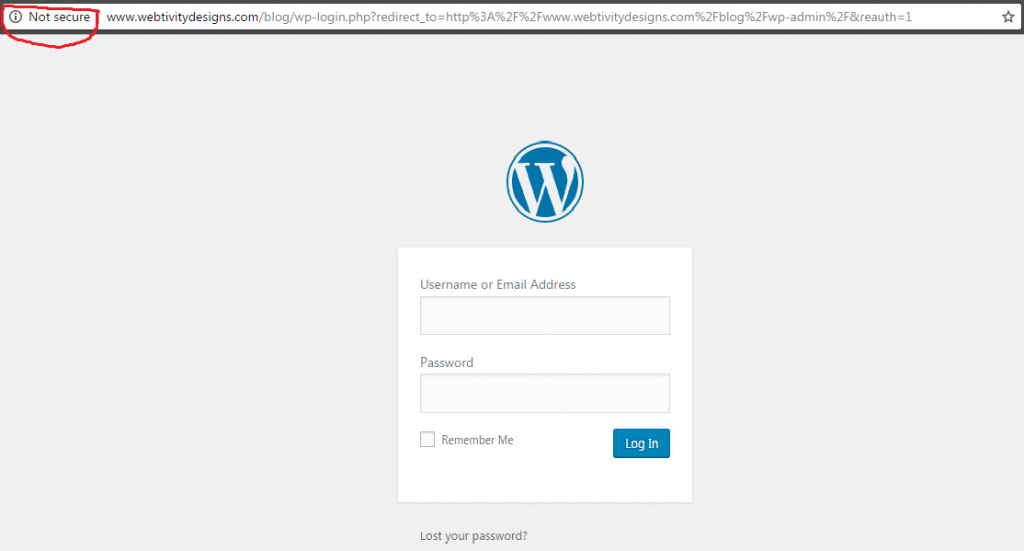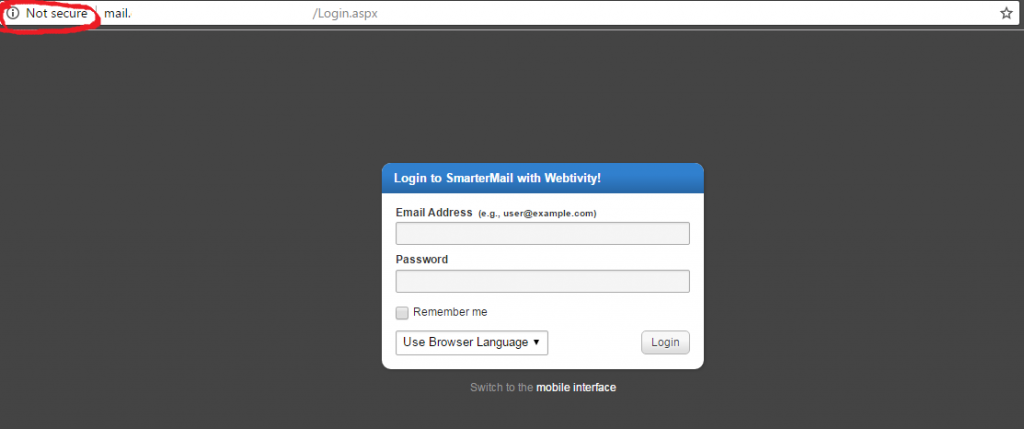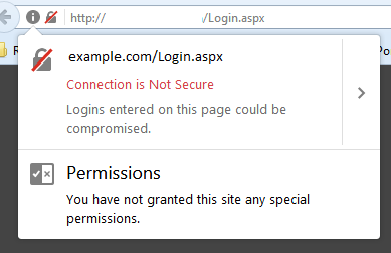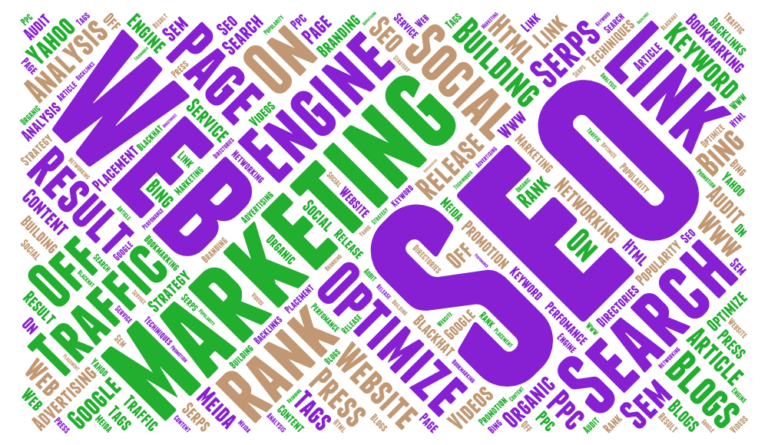There are many variations of Not Secure going around the Internet right now. “Not secure” is the warning you will see in the URL or address bar while using the Chrome Browser on certain pages. See below for an example.
When did this start?
This change came into effect on January 31st, 2017 with the release of Chrome Version 56.
What Pages Are Affected?
Website pages with password or credit card form fields will trigger this “not secure” warning. For example a non-HTTPs or unsecured WordPress login page will look like this:
Some people may question the efficacy of this move in light of the fear it may instill in some unfamiliar users. For example for those of us who use the SmarterMail email server to manage our emails we now see:
Now imagine if you were not familiar with the Internet. Does that look like a safe place to login to you? This abrupt move by not just Google but Firefox as well has lofty goals but mark my words there will be growing pains.
What browsers are affected?
The browsers with the Not Secured Warning thus far include Firefox and Google Chrome. Firefox’s not secure warning started with Firefox 52. It’s warning looks a bit different than Chrome’s however:
What is the goal?
The ultimate goal of both Chrome and Firefox, as well as some other browsers which I’m sure are to follow, is to secure the entire Internet over SSL. Regular HTTP has been shown to be vulnerable to “middle men” attacks. The monitoring, interception, and sometimes even injection of information before it can reach its destination.
It’s easy to see how this might be a concern for pages that contain sensitive information such as credit card or password information.
As it stands about a third of all web traffic is routed through SSLs or HTTPs and that number only keeps growing.
What can I do?
Get in touch with the consummate SEO professionals at Webtivity for more information on how to attain an SSL Certificate to ensure that your website visitors do not run into this menacing issue!









